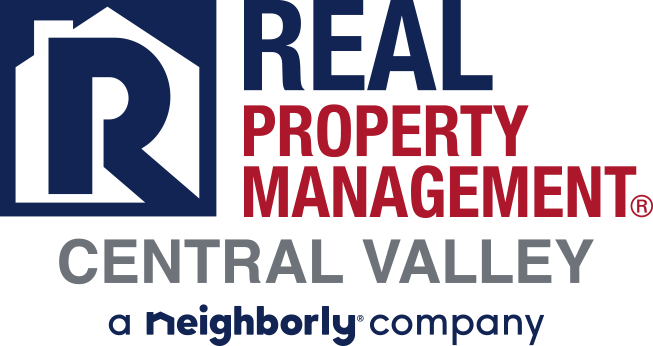Tips for mastering lease renewals in 2022 and beyond

Lease renewals are one of the most difficult aspects of owning a rental property for some owners.
Thankfully, the lease renewal process doesn’t have to be difficult. Owners can efficiently navigate this time of year and get more of their existing tenants to renew their leases simply by following these tips.
Start The Lease Renewal Process – 120 Days Out
The lease renewal process should start four months before leases expire. By taking the first steps this far out, you ensure a smooth process without any hiccups or last-minute issues as the lease renewal date looms.
Here are three things you can do 120 days ahead to get an efficient process kicked off.
Standardize the Lease Renewal Process
Before you even get to 120 days out, you should have standardized forms and procedures locked and ready.
You can start by setting up shared documents that record every step of the renewal process. If you’re using a property management software solution, set up custom fields that keep track of every part of the process – from assessing renewal eligibility to signing the new lease.
For lease types that follow a unique time table and have similar needs, you can set up subcategories within your custom fields to group them together in Propertyware. For example, you can group all of your six-month leases under the same sub-category.
This is also an opportunity to encourage tenants and owners to put all communications through your tenant and owner portals. Propertyware, for example, provides tenants with the ability to communicate their intent to stay or vacate with just a click of a button through the portal. Having that capability keeps all communications in one place and allows property managers to trigger other actions based on tenant responses. Outside of the portal, you can use notifications (or automated emails) to keep tenants informed.
Use this time to set up a cadence with your owners, as well. Communicate at regular intervals and set expectations on your availability to meet and answer questions.
Ask for Tenant Feedback
At this point, you don’t want to make any commitments to tenants, but you do want to get an idea of their intent to stay or leave. If they’re staying, you can update your fields to reflect that and start putting the wheels in motion for renewal.
You can also ask about pending maintenance, repair issues and create work orders to get those fixed before the lease renewal date.
If they don’t intend to stay, you should find out why. You can also walk tenants through the steps they need to take to terminate their lease officially. It’s recommended that they submit their intent to vacate within a tenant portal that will inevitably lead to a pre-move-out inspection.
Also, taking the time to connect with your tenant and move forward on their feedback also shows that you care about their business and see them more than just a check each month.
Determine Lease Eligibility
This is where a good software solution really comes in handy. Use the reporting functionality to pull up rent payment history, maintenance requests, or other issues connected to each tenant. It’s all recorded in one place, so you don’t have to go hunting for check stubs or emails between you and each tenant up for renewal.
Share the reports with owners, as well, so you both can determine how you want to proceed with upcoming renewals.
90 Days Out
Determine Renewal Rates & Terms
Once you know which leases are up for renewal, you can figure out lease renewal terms and rates. Take the time to hash out rate increases or new terms that you recommend (or your renters would like to include in leases). Be sure to get a sense of what’s happening in the rental market by:
- conducting an MLS comparative analysis
- looking at data on Internet Listing Services (ILSs)
- taking a look at other similar properties in your portfolio
You’ll also want to take into account seasonality. It’s never good to be caught with a lease ending during the slow season, as that will limit your ability to get the rental price that the property is worth.
Verify Owner’s Intent to Renew
Now is the time to bring owners into the mix to verify that they intend to renew the lease before reaching out to a tenant. One of the most critical steps in this process is getting their response on the record, officially. The good news is that property management software makes it easy to communicate with your owners through a variety of channels such as email, texts, mail merges, and conversations inside an owner portal.
Tracking Owner Responses
While most owners will get back to you quickly, it’s still important to stay on top of your owners and their responses in an organized fashion so that too much time doesn’t go by. Again, all of this followup and communication is easily more efficient and organized in property management software. A huge benefit is also that it’s easy for everyone on your team and your owners to have access to the same up-to-date information.
To facilitate communication, a best practice is to share your renewal recommendation of eligibility, rental rates, and terms with the owner through a published letter, which can be sent through your software requesting an esignature.
Note that you can also rescreen tenants at the time of renewal—and it’s a good best practice to again check for criminal history. With Propertyware, you can also get this done with the click of a button, at a reduced rate.
60 Days Out
At 60 days, tenants should give you written confirmation on their intent to stay or leave. Again, if you’re using a tenant portal, they should be able to do that just by clicking a button if you want to enable that option.
Even if they do that, it’s still a must to get a lease renewal agreement signed. This just takes a few clicks in Propertyware. You simply have to select the lease agreement you wish to send and use the mail merge functionality to send it to your renewing tenants. They can use eSignature to sign the new lease.
30 Days Out
At 30 days, run a report to verify that all leases are signed. If some are outstanding, follow up with your tenants through the tenant portal.
You can also use your reports to confirm move-out dates and trigger staff and vendor requests for maintenance, inspections, and cleaning. You can also use custom lease views to track if there’s anything still outstanding, which is helpful because there’s so much ground to cover.
Contact RPM Central Valley
For more information about lease renewals, or to speak with us about our property management services, contact us today by calling (209) 572-2222 or click here to connect with us online.
